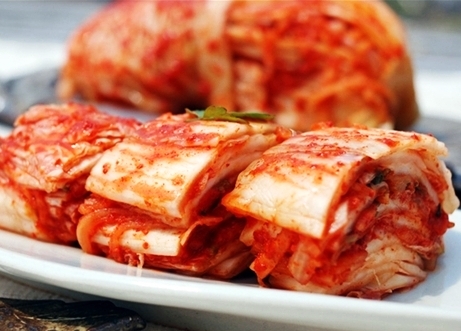
How to Ripen Kimchi
Everyone has a different preference as to when Kimchi(김치) tastes the best – some love eating freshly made, raw kimchi (kind of tastes like a salad); some love eating it when it is just perfectly ripe and then there are those who love sour kimchi (신김치 shin kimchi) which has basically over fermented and obviously tastes quite sour. But one thing is for sure – no one likes the stage when it is in the in-between stages of being raw and ripe. Kimchi really does not taste good at all when it is in the process of getting ripe – I had an aunt who used to call this the time when kimchi has gone CRAZY! And you certainly don’t want to eat the kimchi when it’s crazy! 🙂 So here’s how to ripen Kimchi and avoid CRAZY kimchi.
Since most of us now buy kimchi from the store, let me first write about the best way to eat a store bought kimchi. Too often, I hear people say that the kimchi served at our house tastes great, but when they try the same brand themselves, they think it doesn’t taste nearly as good. I realized it was because they don’t take the time to ripen it properly and then also forget to serve it cold (right out of the fridge). I found that most kimchi (even the poorly made ones) will taste quite palatable when they have had time to ripen properly.
Now, the hard part about buying kimchi from a store is that it is hard to tell at what stage of the fermentation process they are in. One clue is the appearance of the vegetables. They will look more shriveled up if they are further along in the fermentation process. And the chances are that it will also have lost a bit of the juice because the content will start to bubble and balloon up when it ferments which ends up usually overflowing out of the jar. This is actually too bad because kimchi should always be immersed in its own juices for it to taste the best.
The best way is to buy the freshest kimchi possible and bring it home and ripen it from the beginning. But this is usually not possible…So far, I have found the best tasting kimchi that you can buy are actually the ones that are directly imported from Korea (종가집Jongajip is my favorite). It is expensive but worth it in my opinion as long as it hasn’t traveled too far or stayed on the shelf too long at your store. Other than that, the next best thing is to try to buy kimchi that is made locally if it’s available (less chance of it over ripening) and when you bring it home, open it, smell it or better yet, taste it. If your store has a fast turnaround, it is probably in the “crazy” stage.
If it’s already fully ripe, put it in the fridge in the coldest possible setting. If it’s not yet fully ripened and you can wait, let it ripen in your fridge. This will take about 2 weeks in your fridge. Also note that the juice may overflow so either move the kimchi into a bigger container or take some out (1/5th) and leave some room for the kimchi to expand. If your kimchi is still very fresh, not at all ripe and you need to eat it quickly, you can ferment it at room temperature.
In the summer, Kimchi will ripen in 12 ~ 18 hrs and in cooler weather it can take about 24 – 48 hrs. Just check every 4-6 hrs.
If this is all too much info for you to digest, I have a chart at the bottom of this post that can help you with the process. (Boy, it’s been ages since I drew up a flowchart…brings back memories from my college days of hand drawing the charts using graphic rulers..)
What is the ultimate best way to ripen or ferment kimchi?
The most delicious and fantastic kimchi is made when it is fermented the old fashioned way…In a traditional Korean clay jar, buried in the ground in winter time. Even though the ground freezes in the winter, the jar and the saltiness of the kimchi keep it from freezing completely. This is called 김장김치 (kimjang kimchi). Kimjang kimchi is usually made around the ‘start of winter’ (입동 ipdong) in the lunar calendar which is just about now (Nov 7-8th in Gregorian calendar).
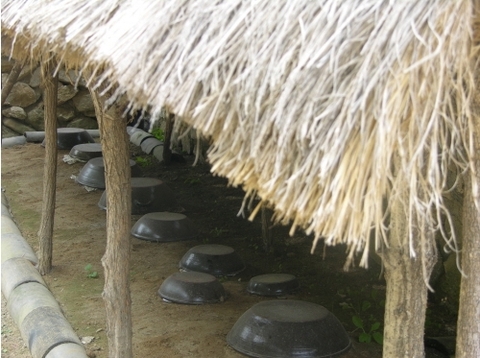
I remember when I was a kid, we spent days preparing and making kimjang kimchi so that it could last us through the winter and into spring. We first dug big holes in the ground big enough to hold our huge clay jars (so big that a child can fall in). In the meantime, we spent the day washing and brining 100+ napa cabbages and also preparing the ingredients for the stuffing. The next day we took these salted napa cabbages and inserted the stuffing in between each cabbage leaf. It was an enormous amount of work but boy…was it worth it. All winter long, we got to eat these amazingly crunchy and zingy and sometimes even ever so slightly frozen kimchi that came out of these jars in the ground. So why was it so tasty?
According to research, when it is buried in the ground, the temperature remains quite constant – at 32 – 35 F all winter long. At this temperature it takes about 20 days for the kimchi to fully ripen but it is definitely worth the wait.
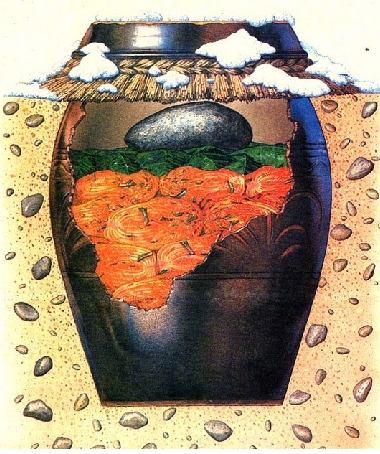
The clay jars are glazed to hold the moisture in but it can still breathe which allows just the right amount of air circulation to take away any heat produced from the fermentation (keeping the temperature stable). It also keeps the air tight enough for the bacteria to not grow too fast which helps the kimchi maintain its peak flavor for a longer period. The history of kimchi can be dated back almost 2000 years to the Goguryo Dynasty according to some historians, so you can see how long Koreans had time to refine the technique of kimchi making.
Since most Koreans now live in apartments and have no backyards to bury the jars, they have invented what is called a kimchi refrigerator. This fridge is different from the conventional refrigerator because the interior walls of the fridge are cooled instead of the air which helps to keep the interior at a more constant temperature. I own one and I have to say it is the next best thing to having your own kimchi jar in the ground. It even has temperature options for fermenting and then just storing it to prolong its freshness.
How to tell if Kimchi is ripe and ready to eat?
When a kimchi is not fully ripe, you are able to smell and kind of taste the individual ingredients – garlic, cabbage, radish, green onion, fish sauce, etc – as they have yet to fully integrate with each other. When it is fully ripened, the tastes of all the ingredients are well blended together and there is full flavor embedded in each cabbage leaf or vegetable pieces. There is also a slight sour taste with an added zing at the end. You can also no longer smell the raw ingredients individually but rather have a combined, wonderful slightly stinky smell that is unique to kimchi. Below is the chart that I promised earlier –
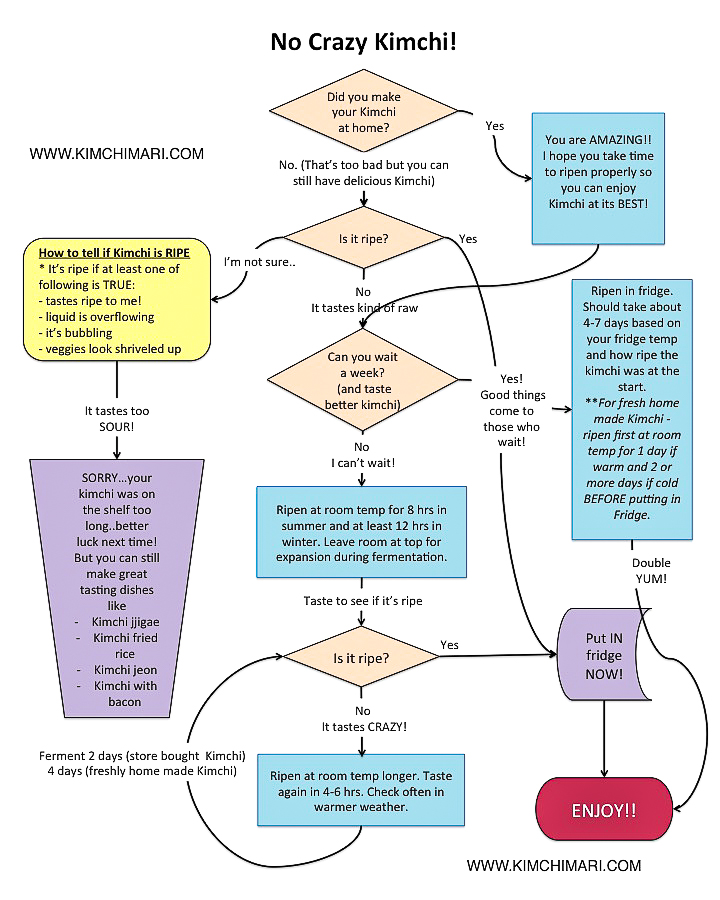
So how long can I store Kimchi in the fridge?
When stored at the ideal temperature that’s close to the freezing point of 32 F (-1 to 0℃), kimchi will keep for 3 months or more.
If the temperature of your fridge is higher (which is normally the case), it will probably keep for at least a month or more. Kimchi will start to taste just too sour when it starts to go bad – at which point, the best way to eat them is by cooking them by making Kimchi Jjigae, Budae Jjigae, Kimchi soft tofu stew, Kimchi fried rice and of course Kimchi Mari! Kimchi will sometimes go bad – it will have this whitish kind of film when it has been really too long and will also smell very pungently sour. You don’t want to eat it at this stage.
Can I take my Kimchi out from the refrigerator and leave it on the counter again to ripen further?
YES! Whether you have store-bought kimchi or made your own kimchi, you can take Kimchi out of the refrigerator at any time and let it ripen or sour further.
If it’s not ripe enough, it will take a long time to ripen in the fridge.
The whole point about my flow chart above was for people who have store-bought Kimchi. You may think it’s ready to eat because you got it from the store, but many times they are not fully ripe and therefore doesn’t taste as good.
Well, I hope this was helpful. Please share this info so that more people can learn how to ripen Kimchi properly and enjoy it at its best!
Take care,
XOXO
JinJoo
PS – if you want to learn more about Kimjang, here are two posts that teach you all about it!
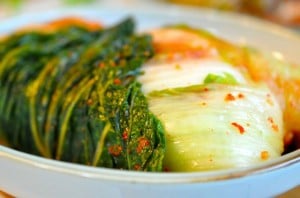 kimjang kimchi
kimjang kimchi- Kimjang Day: Part 1- How it’s done – I share my experiences and tips learned while doing Kimjang with my mother-in-law.
- Kimjang Day: Part 2 – Ingredients and Tips

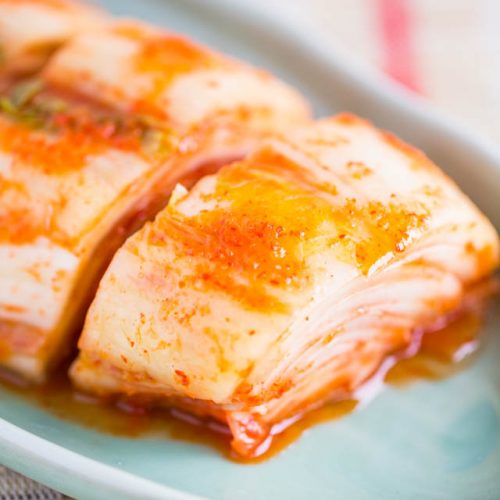
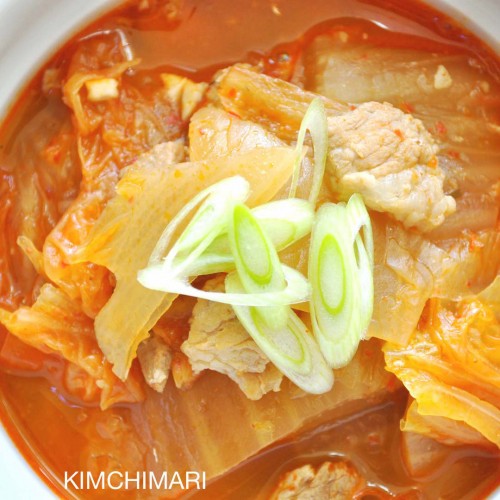
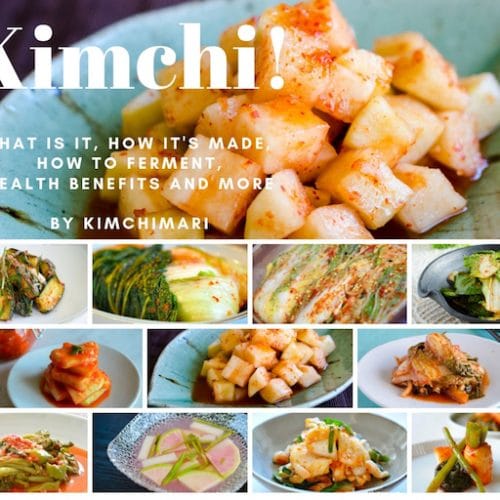

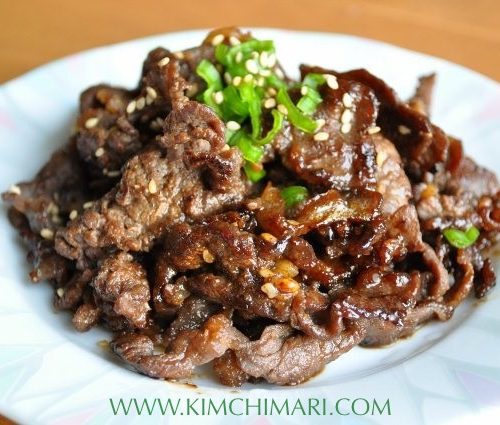
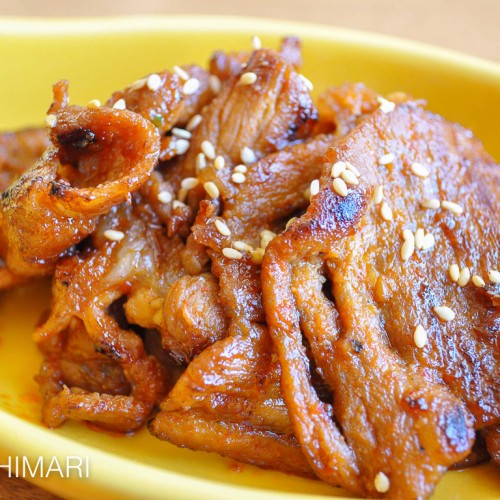
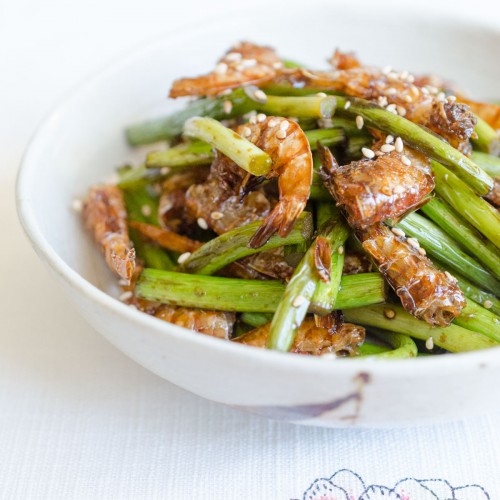
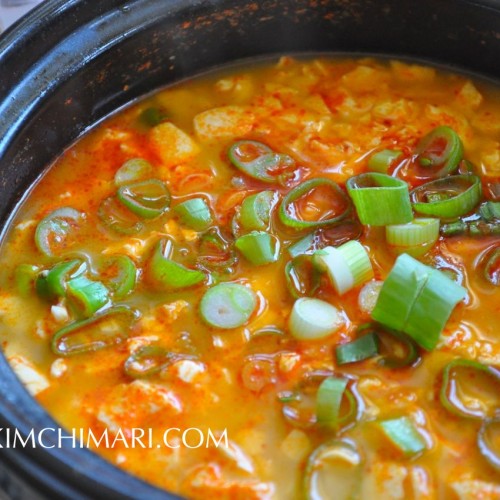
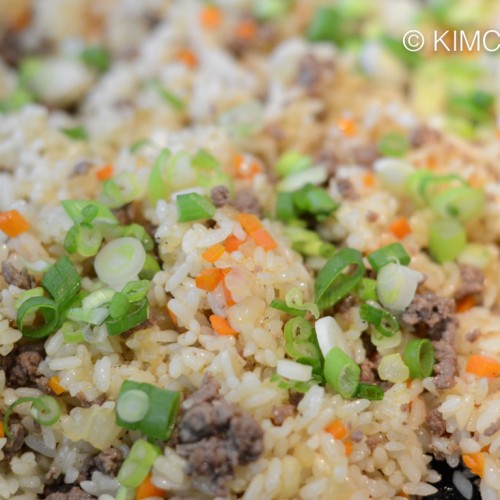










Hello, and thank you for the flow chart! I’ve just made my second batch of kimchi, and it’s not behaving in the same way as the first, which was perfect. I’ve had it out at room temperature for almost 48 hours, and it hasn’t produced any liquid! The first batch covered itself in less than 24 hours. Thinking back, I’m wondering if I forgot to add the sugar, and so the fermentation hasn’t been started. Other than that, I can’t think of what went wrong.
Hi Emily, hmm..adding sugar is not a must for starting the fermentation. It just helps it. Not having enough liquid is more a result of the brining than fermentation. If there isn’t enough salt, that could cause it to leech out less liquid. Cabbages can also be different. Some cabbages have more water than others. I hope it’s not too late but if you feel it’s still too dry, you may just want to add some radishes tossed in salt a little bit? Or you could add a little bit of dashima broth with salt and sugar added but if it has started to ferment, that could be a little too late. Let me know how it goes! Good luck!
I know it’s an old post but I need to know!
I made my own kimchi and let it ferment in room temperature for 24h and put it in my fridge for 1 week. I tasted it now and realized it’s not sour enough. So my question is,
Can I take out the kimchi and put it in room temperature again after having it in the fridge?
Yes you can! Just check every 3 hrs or so and see if it smells and tastes like how you want it. Will ripen quickly this time so be careful! Thanks for asking!
OMG! Korean cooking + computer scientist, LOL, perfect, we speak the same language. Love the chart.
I have a couple of buckets of ripe kimchi right now in the fridge waiting to be devoured tomorrow with a couple of bottles of Makgeolli. The Kimchi is home made, the makgeolli bought.
Great Blog! Expect to see me a lot arond here 😉
Oh YAY!!! Fabulous! So glad you found me and understand me. 😉 Thank you for liking my chart and wow, Kimchi and Makgeolli pair so wonderfully together- hope you enjoyed it. Thank you SO much for your comment and I am really looking forward to seeing you around here too!!
Hi, I hope you’re still reading this.
I recently made napa cabbage Kimchi twice, following a vegan recipe. We left it to ripen in a kimchi jar and a canning jar (latch not pulled all the way down so that CO2 can get out) for various lengths of time at about 18-22°C. The cabbage was covered in sauce and had two leaves on top. It started bubbling and the juices overflowed, after that we put it in the fridge. Both batches (after 24, 29 and 50h and 72h of ripening at room temperature respectively, I misread the recipe at first that’s how the longer times came about) turned out somewhat fizzy/carbonated, even though the taste is good. According to blog posts and forums, the fizziness might stem from the kimchi being too ripe – but after 24h already? Other said it’s just how fermented food should be like. I am confused.
I’ll try more salt and less sugar/starch next time, but maybe it’s actually normal? The texture is not mushy, and the taste and smell quite close to what we had in Korea – the only funky tasting Kimchi we once got there smelled like rotting organic waste and had a cheesy aftertaste (scary…). The fizziness didn’t go away after storing it it the fridge for a week, though it abated a little. All four jars have about the same degree of fizziness, despite the difference in fermentation time.
Is it supposed to be that way? If not, how can we prevent this?
Hi! OF COURSE I am still reading it! I think it depends on how you define “fizzy”. If you are talking about a the sort of clearing taste where Kimchi has a hint of fizziness, that is how the best Kimjang kimchi tastes. But it is actually not easy to acquire that and it usually happens AFTER Kimchi has been fermenting slowly underground or in a Kimchi fridge for days. If you are talking about “FIZZY” like almost it is like carbonated soda then that’s not normal and I would say it is actually hard to make traditional Korean kimchi recipe taste like that. I’m not sure what your vegan recipe is like so it’s hard to say but after just 24 hrs at 18-22C should not be fizzy at all. And even after 72h, it can start to taste pretty sour but not really FIZZY like soda. BUT, the most important test of all is how you think it tastes and how you remember it. I mean, if it tastes good to you, no problem right?
Yes, perhaps it needed more salt and less sugar as you say since salt prevents bad bacteria and spoiling and sugar promotes bacteria fermentation.
To prevent it, I don’t know.. try my recipe?? HAHA… but seriously, there are so many odd Kimchi recipes out there I really don’t know what to say. I’m actually working on a vegan Kimchi recipe so hopefully you will see that soon. But you can always just try my Mak Kimchi recipe without the fish sauce and just add more salt to taste. Hope this helps and good luck!
This is such a great post, JinJoo!!
Just made a jar of kimchi and was wondering if I could ferment it in the fridge, as the batch I previously made fermented way too much (at room temp) and was kinda yucky tasting, so (unfortunately) I had to toss it out. 🙁
As I don’t want to ruin this one as well, I was thinking if I could let it ferment directly in the fridge, skipping that half of day of sitting at room temp (this way maybe prolonging it’s shelf life?) because these days is super hot, outside as well as inside.
What do you think? Could the kimchi (slowly) ripen directly in the fridge?!
Many thanks!
Keep up the good work!
Thank you!! So it could ripen very slowly in the fridge. I am afraid though that it may take weeks for you depending how salty it is. Try letting it ferment in fridge and if you get tired of waiting, you could take it out then and let it sit for even 2 hrs and then put it back in. Or if it’s really hot, yes, just leave it out maybe 3-4 hrs right after making it and then put in fridge?
I’m wondering also if you are making your kimchi with too little salt? The less salty it is, quicker it will ripen and will spoil quickly. Remember that Kimchi should taste a little too salty and spicy when you taste right after making it. The spiciness and saltiness will go down as it ripens. Hope this helps. Good luck!
Thank you for the reply, JinJoo!!
I left it at room temp for about 5 hours, I think it should be enough.
You might be right about the salt…the only salt I’ve got in this recipe is for the brine,150 g for about 1 litre of water (I had about 900g Nappa cabbage) and that’s it (plus the 20g of dark soy sauce in the seasoning paste).
I leave the cabbage for about an hour in the brine and I don’t rinse it afterwards, just drain it well.
(I’m talking about mak kimchi, as this is the only type of kimchi that I make, I guess I’m too lazy to make tong baechu kimchi.)
One other thing, I use considerable less amount of gochugaru (about 1 TBS) as my stomach cannot tolerate too spicy foods (even though I enjoy it).
Should I sprinkle some more salt in the jar and toss the kimchi around to mix it in? What do you think?
As for the time it would take to ripen in the fridge, I don’t mind waiting even for more than a month, as long as the flavour develops nicely.
For the next batch I’ll try out your mak kimchi recipe (nice trick there, soaking the cabbage halves and then cutting them in smaller pieces!) skipping the fermented shrimps, there’s no way I can find them where I live.
Thanks for your advice!
Cheers!
Hi Sorry for the late response! Family stuff last couple days..So it looks like your brine solution is OK but not sure about leaving the cabbage for only 1 hour. That’s just not enough time for the cabbage to get fully pickled. If you don’t want to spend 3 hrs in brining, you should increase the amount of salt in your brine. But basically, the cabbage needs to be quite limp and bendable (see my brining tip post) otherwise, you will get liquid from the cabbage seeping out onto your kimchi seasoning, diluting the salt level in it and probably that’s why it is souring so quickly. Using less gochugaru should not be a problem.
I guess you could try adding more salt to your seasoning paste but not sure how much more you need and not even sure if that will work. Sure, please try my mak kimchi recipe, you can totally reduce the amount of gochugaru. You can also skip fermented shrimps, just use anchovy sauce (you can order online – even from my shop) or commonly available fish sauce. You just cannot ignore the importance of brining the cabbage properly so please take the time for that. Good luck!
Thank you for the reply and all the info, JinJoo!
The only reason I’ve been leaving the cabbage in the brine for only one hour is because that’s what the recipe I use says. But now that I know how it should be done, I’m totally not gonna make the same mistake again!
The next batch it will definitely be better (I’m going to read all your post on kimchi making until then)!
Thanks again for your help, much appreciated!
Cheers!
You are very welcome! Good luck!!